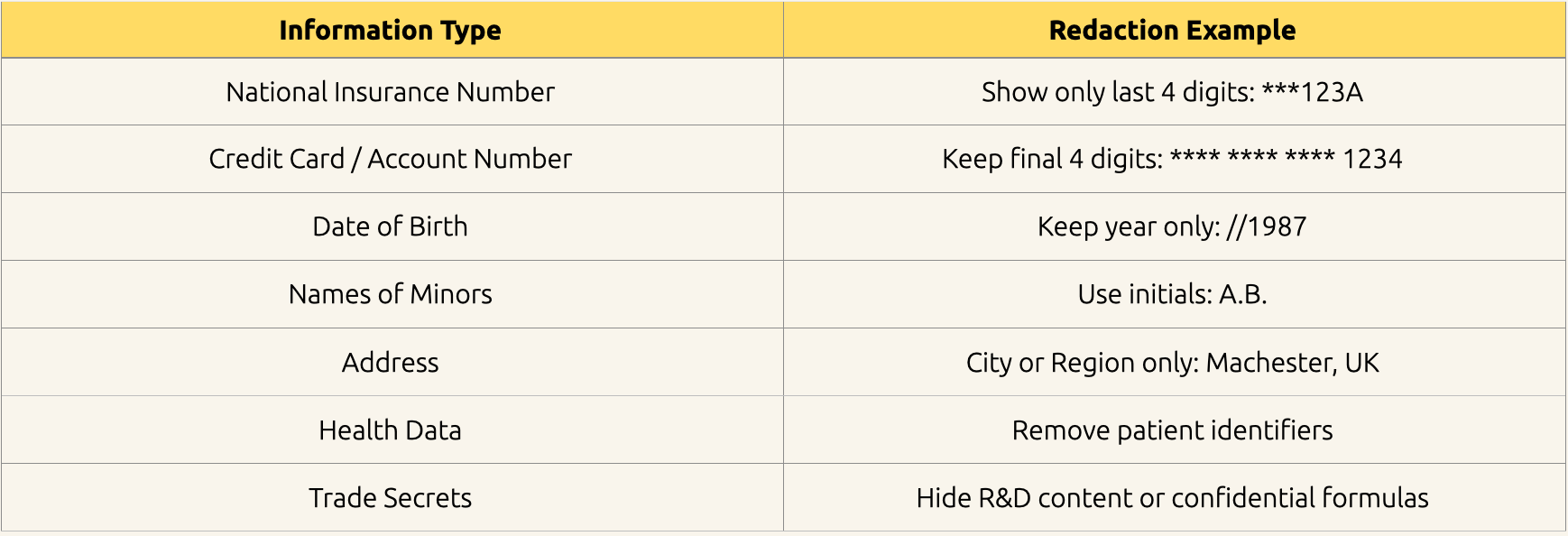Redaction Explained: A Complete Guide to Protecting Sensitive Data

Redaction Explain: A Complete Guide to Protecting Sensitive Data
If you need to share a document, but can’t share everything in it, you’ll need to redact it. At Phaselaw, we believe redaction shouldn’t be tedious or risky. It should be fast, accurate, and consistent because every file you share carries responsibility.
In this guide, we’ll unpack what redaction is, why organizations redact files, and how to do it properly.
What Does It Mean to “Redact a File”?
Definition
“redact a file”: to deliberately remove confidential or personal data from a document before sharing it, ensuring readers can’t see protected information.
Redaction isn’t just about hiding information, it’s about protecting it. In practice, that could mean blacking out text, blurring images, or masking entire data fields.
There are many instances where redaction is used to safeguard information including:
- Legal documents and case filings
- Government reports and FOI disclosures
- Compliance and audit reports
- Corporate communications and HR files
- Data Subject Access Requests
Why do Organizations Redact Files?
There are 3 big reasons an organization would need to redact files:
- Privacy: Protecting personal data or personally identifiable information (PII) like ID numbers, addresses, medical details, or names of minors.
- Security: Preventing exposure of trade secrets, credentials, or internal infrastructure details.
- Compliance: Meeting the requirements of laws like GDPR (UK, EU), HIPAA (U.S.), CCPA (California) or FOIA
Redaction matters because failure to properly redact exposes you and your organization to risk of data breach, heavy fines and reputational damage.
What Kind of Information Should You Redact?
Removing privileged information from files and keeping the relevant information intact is the key to a successful redaction. That’s how transparency and privacy can peacefully coexist.

How do Different Sectors Redact Files?
- Legal: Used in litigation, discovery, and contract review. Redaction must comply with legal rules and court protocols.
- Example: A law firm can automatically remove all signatures or client identifiers across hundreds of PDFs in seconds.
- Corporate and Compliance: HR, finance, and M&A teams redact sensitive data before sharing it externally.
- Example: Payroll data and client account numbers are masked before audit reports are sent to partners.
- Government and Public Sector: Redaction supports transparency while protecting classified or personal data in FOI and public releases.
- Example: The FBI routinely redacts personal details before releasing public records under the Freedom of Information Act (FOIA).
Common Mistakes When Redacting Files
Beware of these shortcuts that might make data appear hidden, but do not actually redact the data (the information is findable).

How to Redact Files Properly
Here’s how to get it right:
- Always redact from a copy of your document
- Define targets (names, emails, account numbers) before you start
- Layer reviews for legal or government files
- Test the redacted file to make sure nothing’s recoverable
- Export final versions as flattened or image-based files
When you redact files the right way, you eliminate risk and save time.
FAQs About Redacting Files
- What does “redacted” mean in a file?
- It means confidential information has been permanently removed to protect privacy and comply with regulations.
- Can redacted information be recovered?
- Only if the redaction was done incorrectly.
- Proper redaction removes the data entirely, not just masks it.
- Is redacting the same as censoring?
- Nope. Redaction protects privacy, but censorship suppresses ideas.
Final Thoughts
In an era where one leaked document can make headlines, redaction isn’t just a best practice, it’s a necessity.
Whether you’re a DPO, lawyer, HR professional, or data controller, knowing how to properly redact files keeps your organization safe and your clients’ trust intact.
At Phaselaw, we deeply understand the importance of balancing transparency and privacy.
We built our product with exactly that in mind, that is why our tools enable users to seamlessly share the information that needs to be shared and protect information that need to be protected
Because safeguarding information shouldn’t slow you down.
Book a demo today to learn more about how we can make your document disclosure 10x faster!

